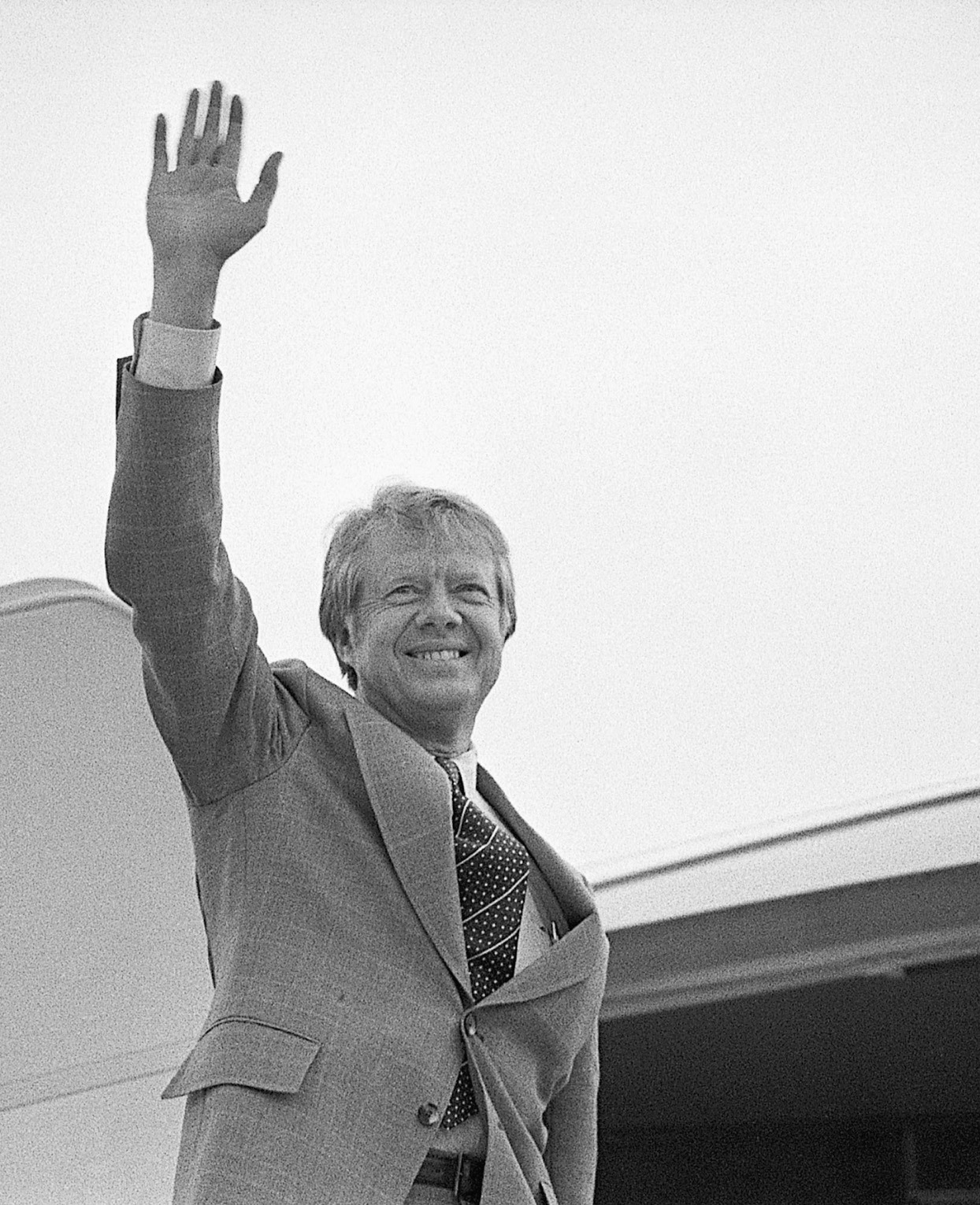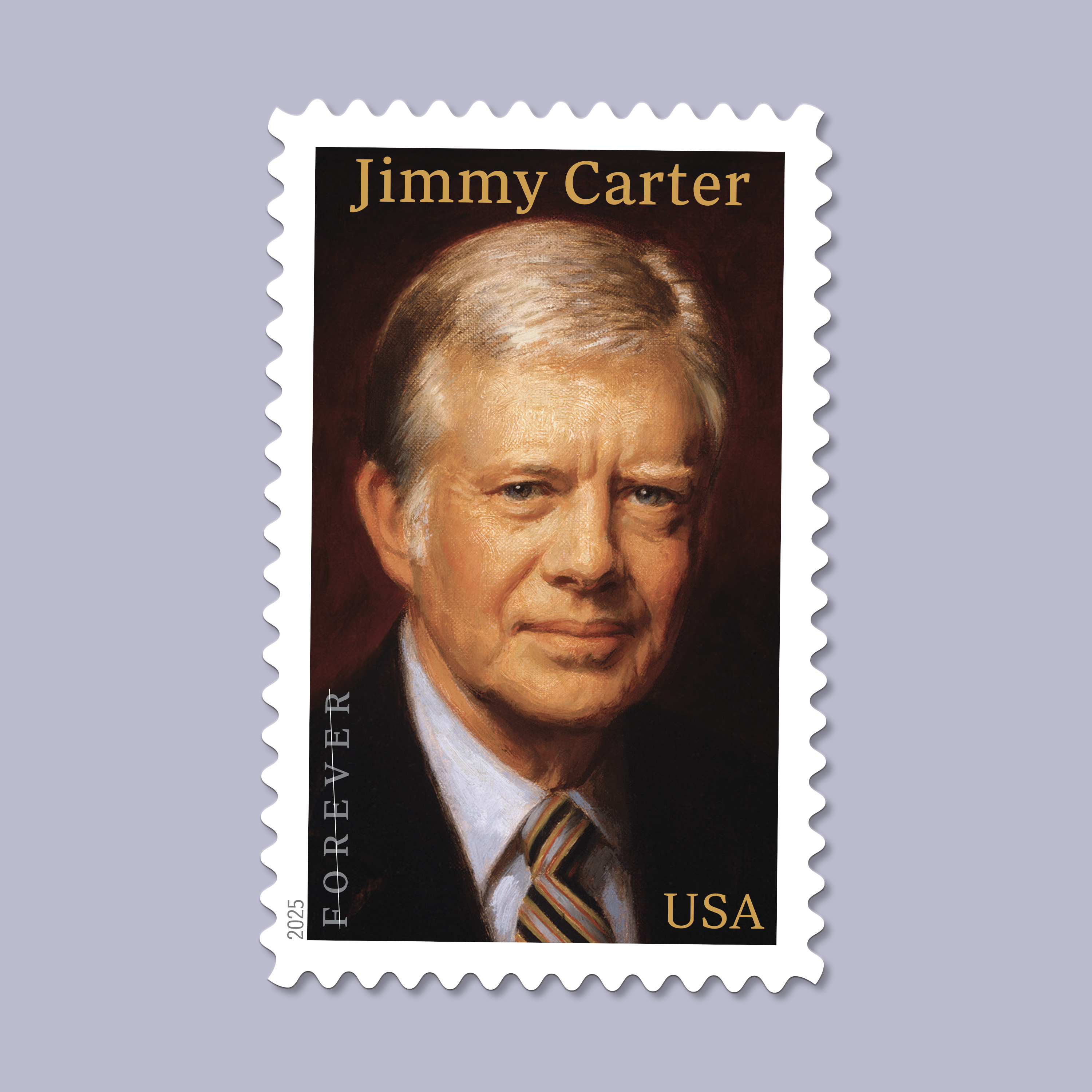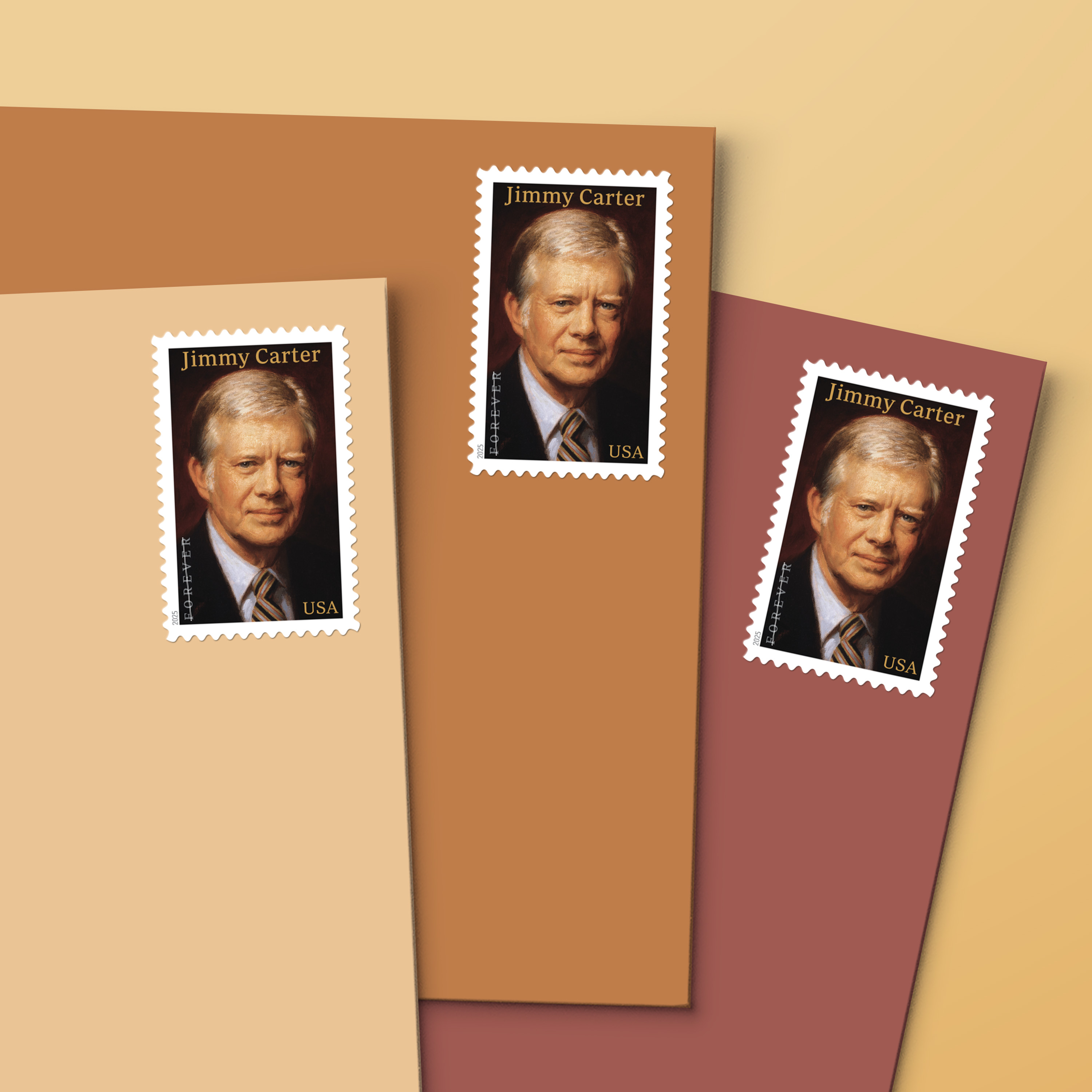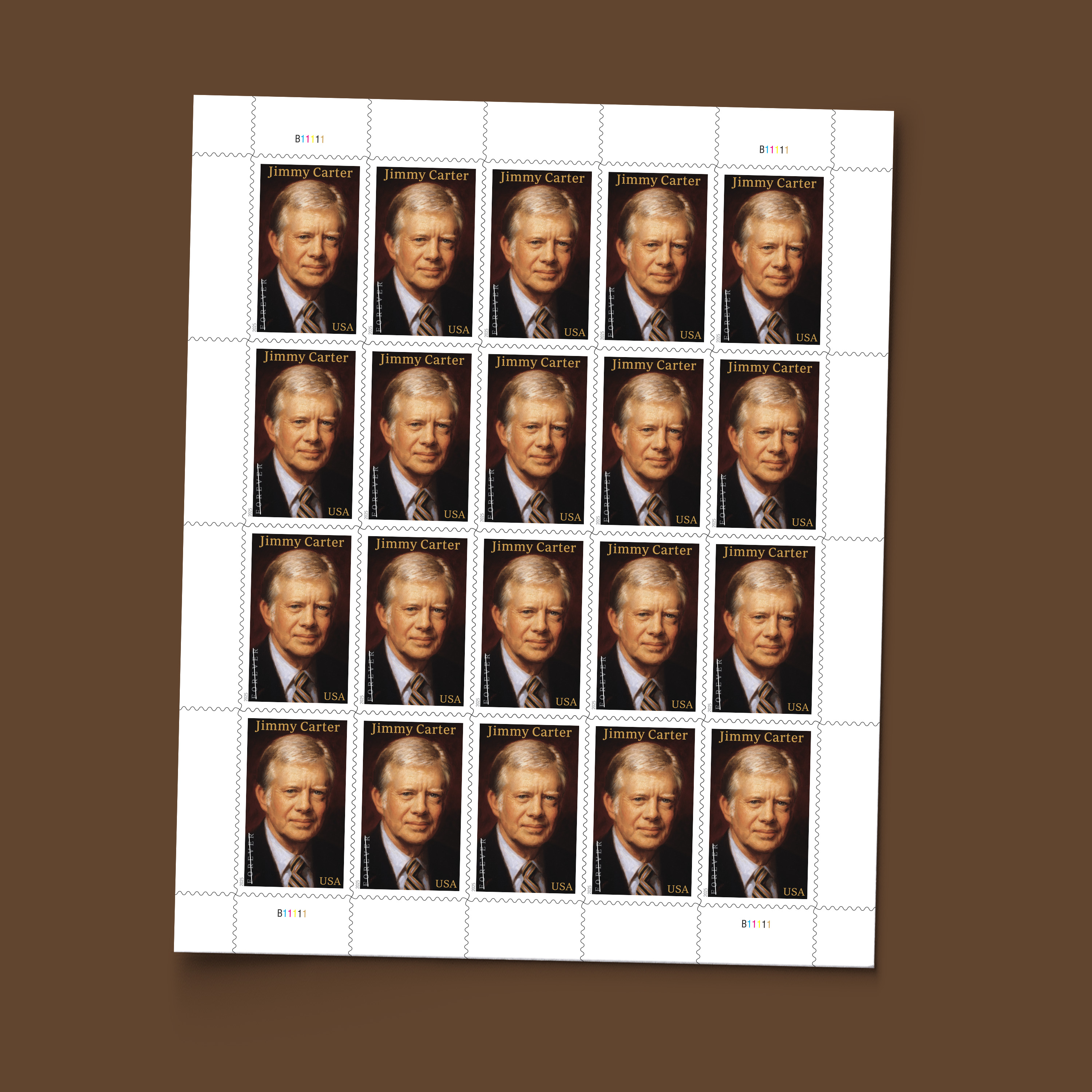
Presidents on Stamps: A Postal Tradition
A new Forever® stamp commemorates Jimmy Carter on what would have been his 101st birthday
Honoring former presidents the year after their passing, usually on their birthday, is a long-standing Postal Service tradition. On October 1, we’ll continue this tradition as we commemorate Jimmy Carter, the 39th President of the United States, on a stamp that hints at the human side of one of the most demanding and high-profile jobs in the world.
USPS art director Ethel Kessler knew early in the design process that this stamp needed to convey a sense of Carter during his presidency, even if the public perhaps knew him longer as someone who lived meaningfully after his time in politics.
“The conundrum is, he was president for four years almost 50 years ago and was so active as an ex-president on a large variety of projects, official business, book writing, and building houses for Habitat for Humanity, but this stamp is meant to honor him as a president,” Kessler recalls. “So what does that look like?”

To supplement the many preliminary images provided by the research team, Kessler sought inspiration at the National Portrait Gallery in Washington, D.C. “And what I found,” she says, “was a lovely ‘working portrait’ by the same artist who did his formal presidential portrait.”
Kessler was pleased to discover a 1982 oil-on-linen painting created as a life study by Herbert E. Abrams (1921–2003) in preparation for painting Carter’s official White House portrait. Interviewed in 2000, Abrams explained that his preparation process extended beyond sketches and studies: He made sure to have lunch with his subjects before they sat for him. Abrams enjoyed getting to know them, and in turn his subjects felt more confident about the process.
Abrams’ humanizing approach to portraiture was well suited to a president who came to the White House as an outsider representing a new generation of progressive Southern politicians.
The day after his inauguration on January 20, 1977, Carter began his term with a controversial move, issuing an executive order that pardoned those who had illegally evaded the military draft during the Vietnam War. In the four years that followed, he would make humility, reconciliation, and frugality recurring themes of his presidency.
[Art director Ethel] Kessler believes that Abrams’ preliminary study, marked with golden tones that convey a sense of dignity, portrays the Jimmy Carter she remembers: a man who seemed comfortable with himself.
Carter’s progressivism was most evident in his appointments of many women and minorities to government positions. He created a presidential commission on mental health, established new Cabinet departments, and greatly increased the size of the National Park System and federally designated wilderness areas. A fiscal conservative, he was deeply concerned with trying to balance the federal budget and control inflation. In his efforts to improve the economy, he presided over the deregulation of energy prices as well as several industries, most notably air travel.
On the world stage, Carter was praised for personally negotiating the Camp David Accords, providing a framework for peace in the Middle East. He signed SALT II, a treaty with the Soviet Union to limit strategic nuclear arms, and he initiated a major change in foreign policy when he announced that the United States would officially recognize and establish formal diplomatic relations with China.

After a presidency that concluded on a note of diplomatic and economic turmoil, Carter became a prominent activist for peace, human rights, and social and economic progress around the world. In 1982, he partnered with Emory University to establish The Carter Center, which advances democracy, monitors elections, mediates disputes, and works to prevent neglected tropical diseases in the world’s poorest nations. In recognition of his efforts, he received the Nobel Peace Prize in 2002 — long after many had praised him as America’s greatest ex-president.
Kessler believes that Abrams’ preliminary study, marked with golden tones that convey a sense of dignity, portrays the Jimmy Carter she remembers: a man who seemed comfortable with himself. “I’m happy with this approach,” she says. “I think this image holds up well.”
Photograph by Bettmann/Getty Images
